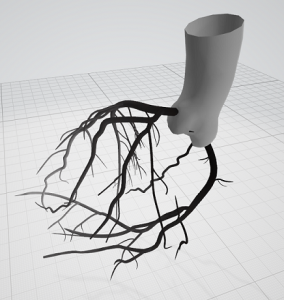Hello!
I want to simulate blood flow in real human vessels, the problem is, real vessels are very thin, the radius maybe less than 1 mm in some places.
So, can obi work in that small-scale environment? Any suggestion?
Thank you ~
PS: In my scene, the vessels are full-body vessels, not parts of them. And the vascular network is so complex that it can't be seen clear at all.
This is one part's image:

I want to simulate blood flow in real human vessels, the problem is, real vessels are very thin, the radius maybe less than 1 mm in some places.
So, can obi work in that small-scale environment? Any suggestion?
Thank you ~
PS: In my scene, the vessels are full-body vessels, not parts of them. And the vascular network is so complex that it can't be seen clear at all.
This is one part's image:




